California International Blind Sailing Regatta 2010
By Lawrence Euteneier, Captain, Blind Fishing Boat.com
Sailing blind is an amazing experience in that you depend on the wind in your face and the feel of the boat and tiller to navigate. Sure, countless electronic aids can be found on most larger sail boats, but for those purists who love to race intermediate sized boats, (18′-25′), it’s all about using your senses.
Photo of our team on San Francisco Bay with the Twin Peeks in the background
Six teams of blind sailors from around the world gathered in San Francisco over the weekend of May 14-16 to take part in the California International Blind Sailing Regatta. Being a fan of sailing for many years now, I jumped at the chance to join up with a non-sighted sailor from New Zealand to enter the race.
Our team was put together by International Blind Sailing for which I’ve been serving as an informal expert resource on navigational aids. I only met Dennis Hebberly, the helmsman of our team, and our two team-mates during practice the day prior to the actual races getting underway. With Peter Frisch as our sighted tactician from Boston, and George Gurrola as our fourth to handle the jib, we had our crew. (Teams are made up of four people. One non-sighted to helm, another to work the sheets for the main sail and traveler, and two sighted folks; one to manage the jib and the fourth to call out instructions, but prohibited from actually physically helping in any way.)
Photo of the sailboat leaving the dock
Al Spector and Danette Davis of the Marin Sailing School organized the event, which was hosted by the Island Yacht Club located on Alameda Island situated in San Francisco Bay. Teams came from Boston, Canada, Japan, two from California and our own. Six races were held on day one, and three additional races on day two.
Photo of the sailboats crossing the start line
Positioning the boat as close to the start line without going over involved careful timing and precise boat handling. There’s quite a thrill to hear another boat sailing off to one side, and to then hear a third boat traverse the space between in the opposite direction. Or, when rounding a mark at the same time as another boat, with all the shouted commands to slacken sheets, swing booms, change course, etc. Fine-tuning tension on the sheets, position of the tiller and angle of sails to maximize speed is an on-going preoccupation, as is deciding where on the bay the wind will next blow hardest.
Photo of our boat catching a good breeze
At the end of day one Boston was in the lead with 14, Canada in second with 20, Japan and our team were tied for third with 21, and the two California teams had 23 and 27. Our 21 points for day one were collected by finishing 3, 2, 2, 2, 6 and 6. We had no idea why our two final races were so slow with us finishing last both times.
Photo of our boat running with the wind
Both our helmsman and I are 6’3″ and weigh just over 200lbs each. We figured weight distribution was critical so on day two I began slipping forward parallel to the mass placing my weight on one side of the boat or the other after each adjustment to the mail sail. Movement of the sails, tiller and all persons aboard was always done smoothly and in well-timed increments to avoid rocking the boat and taking off speed. All this must have helped as on day two we did much better.
Photo of boats rounding the mark
On day two, boats were rotated as they had been twice the day prior, with winds 5-10 knots in the morning, working up to 10-15 knots in the afternoon. Our team surprised everyone by pulling off first place finishes for each to the three races on day two.
Photo of our boat in the lead
With the elimination of our worst time, we were now tied for first with Boston. Our three firsts to their two gave us the win. I’m proud to say that the team representing Canada from Toronto came in a close third.
There were plenty of close calls on the water, but only a very small handful of actual instances where boats touched. A foul resulted in the boat being required to complete a 360 degree turn at some point prior to finishing the race. No formal complaints were registered, with any conflicts being resolved by the parties over a beer after the day’s races concluded.
Photo of boats passing coastguard island
There’s another form of blind sailing developed by the Italians involving audio buoys. There are two audio buoys that are positioned to denote the start/finish line, and a third to serve as the windward buoy to which the boats need to round. Two boats race at once, and each boat carries an audio device that omits a pre-determined tone when it’s sailing to Port, and another when sailing to starboard. Each team is made of two non-sighted person whose only job is to announce if the team sailing the boat has committed a foul. Thus, it’s 100% up to the non-sighted sailors to navigate the course while at the same time avoiding collisions with the other boats.
At some point in the future, audible electronic navigation aids will no doubt be introduced to the world of blind sail boat racing, but not until they have reached a point of being reliable, effetive, and widely available. It’s for this reason that many involved with blind sailing programs are closely monitoring any new developments in the field of audible marine technologies such as the research trials being carried out as part of the Blind Fishing Boat initiative.
A big thanks to the organizers and host of the event, and to Jane Brown for the warm hospitality she showed myself and another race participant by having us as guests in her home. I don’t think the event could have been better organized.
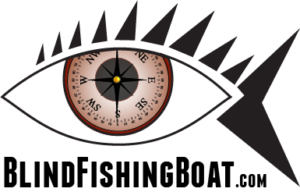
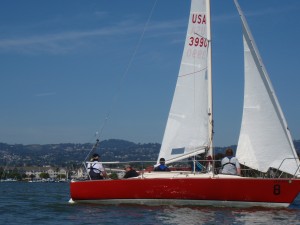
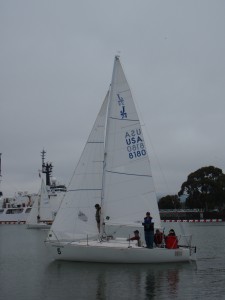
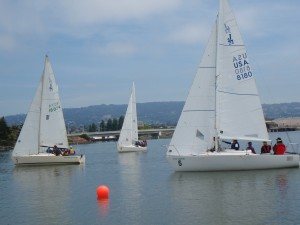
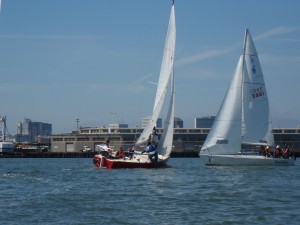
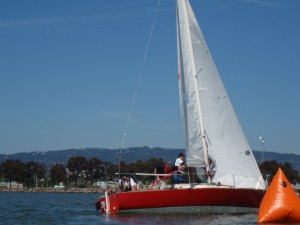
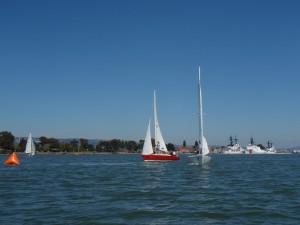
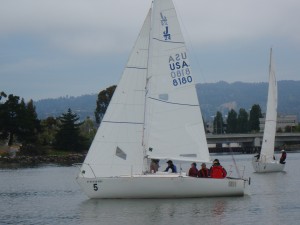
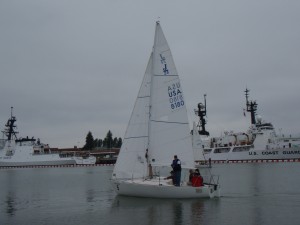
Comments are closed.